Introduction
In the world of home cooking, few dishes can rival the succulent and flavorful experience of a perfectly cooked pork tenderloin. This cut of meat is not only tender and juicy but also serves as a versatile canvas for a multitude of flavors, making it a staple in many kitchens. Among the myriad of ways to prepare pork tenderloin, one standout recipe is Savory Pork Tenderloin with Creamy Mustard Sauce. This dish artfully combines rich ingredients and simple cooking techniques to create an unforgettable meal that is sure to impress family and friends alike.
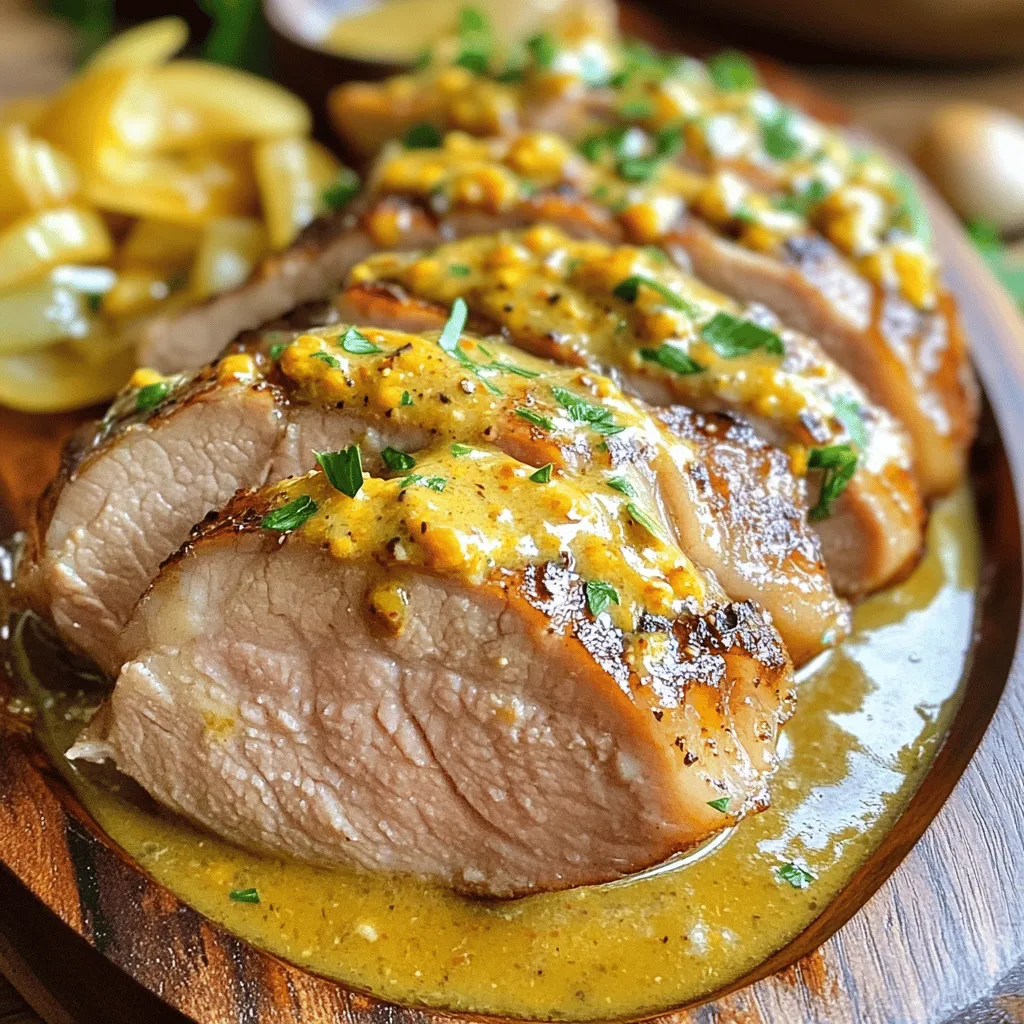
The allure of pork tenderloin lies in its ability to absorb flavors beautifully while retaining its natural juiciness. When paired with a creamy mustard sauce, the tenderloin takes on an exquisite flavor profile that is both savory and tangy. Whether you’re preparing a weeknight dinner or hosting a special occasion, this recipe is designed to elevate your dining experience without overwhelming you with complexity. It’s perfect for both experienced cooks and novices in the kitchen who want to create a restaurant-quality meal at home.
Understanding Pork Tenderloin
Defining Pork Tenderloin
Pork tenderloin is a long, narrow cut of meat that comes from the muscle that runs along the spine of the pig. Known for its tenderness, this cut is often regarded as one of the most desirable parts of the pork carcass. The characteristics of pork tenderloin include its mild flavor and lean profile, which makes it an ideal choice for a variety of culinary applications. Unlike other cuts of pork, such as shoulder or belly, which may require longer cooking times and are typically fattier, pork tenderloin cooks relatively quickly. This makes it an excellent option for busy weeknights or last-minute dinner parties.
One of the reasons pork tenderloin has become a popular choice among home cooks is its versatility. It can be marinated, grilled, roasted, or sautéed, and it pairs well with an array of flavors, from sweet and fruity to savory and spicy. When cooked properly, it remains juicy and flavorful, making it a favorite in households across the globe.
Nutritional Benefits of Pork Tenderloin
Pork tenderloin is not only delicious but also offers a range of nutritional benefits. This lean cut of meat is lower in fat compared to other pork cuts, making it a healthier option for those looking to reduce their fat intake. A standard serving of pork tenderloin is rich in protein, which is essential for muscle growth and repair. Additionally, it provides essential vitamins and minerals, including B vitamins, zinc, and phosphorus.
When compared to other meats, pork tenderloin holds its own as a nutritious choice. It contains less fat than beef tenderloin and is comparable in calories to skinless chicken breast. For health-conscious diners, opting for pork tenderloin can be a flavorful way to enjoy meat without compromising dietary goals.
Choosing the Right Pork Tenderloin
When it comes to selecting quality pork tenderloin, there are a few key tips to keep in mind. First, look for a tenderloin that has a nice pink color with minimal discoloration. The surface should be moist but not slimy, indicating freshness. Additionally, check for a firm texture, which is a sign of quality meat. Avoid tenderloins that have excessive fat or sinew, as these can detract from the overall eating experience.
Sourcing your pork tenderloin from a reputable butcher or farmer’s market can significantly impact the quality of your dish. Fresh, high-quality pork not only tastes better but also supports ethical farming practices. Whenever possible, choose pork that is labeled as antibiotic-free and humanely raised, as these factors can contribute to both flavor and sustainability.
Ingredients Analysis
Key Ingredients Overview
To create the Savory Pork Tenderloin with Creamy Mustard Sauce, you’ll need a selection of key ingredients that work harmoniously to build a rich and satisfying dish. Here’s a breakdown of the main components:
1. Pork Tenderloin: The star of the dish, pork tenderloin provides a tender and juicy base that absorbs flavors beautifully.
2. Cream: Adds a luxurious texture to the sauce and balances the sharpness of the mustard, creating a rich and creamy consistency.
3. Mustards: A combination of Dijon and whole grain mustard contributes layers of flavor, with the Dijon providing a smooth tanginess and the whole grain mustard adding texture and depth.
4. Herbs: Fresh herbs like thyme or rosemary can enhance the dish’s aroma and flavor, making it even more delightful.
Each of these ingredients plays a crucial role in developing the overall flavor profile of the dish. The creaminess of the sauce complements the savory notes of the pork, while the mustards introduce a gentle heat and acidity that elevate the dish to new heights.
Substitutions and Variations
For those looking to customize this recipe or accommodate dietary restrictions, there are several substitutions and variations to consider. If you’re looking for a lower-fat option, you can replace heavy cream with Greek yogurt or a plant-based cream alternative. This will reduce the calorie count while still providing a creamy texture.
For a gluten-free option, ensure that the mustard you choose is labeled gluten-free, as some brands may contain gluten as a stabilizer. You can also experiment with different herbs and spices to personalize the flavor. For instance, adding smoked paprika can introduce a subtle smokiness, while a splash of white wine in the sauce can enhance its depth.
To cater to different tastes, consider adding a touch of honey or maple syrup to the mustard sauce for a hint of sweetness. This can create a delightful balance against the savory pork. With these substitutions, you can tailor the recipe to fit your dietary needs without sacrificing flavor.
Preparation Steps for Savory Pork Tenderloin
Preparing the Pork Tenderloin
Before you begin cooking, it’s essential to prepare the pork tenderloin properly. Start by removing any silverskin, which is a tough membrane that can make the meat chewy. To do this, use a sharp knife to gently slide under the silverskin and pull it away from the meat. This step is crucial for ensuring a tender and enjoyable eating experience.
Once the silverskin is removed, pat the tenderloin dry with paper towels. Drying the surface helps achieve a beautiful sear during cooking, which locks in moisture and flavor. Next, season generously with salt and pepper, which will enhance the natural flavors of the pork. You may also choose to rub the tenderloin with additional seasonings, such as garlic powder or smoked paprika, to add depth to the flavor.
Searing the Tenderloin
Searing is a key cooking technique that develops rich, caramelized flavors and creates a beautiful crust on the pork tenderloin. Begin by heating a large skillet over medium-high heat and adding a tablespoon of oil. Once the oil is hot and shimmering, carefully place the seasoned tenderloin in the skillet.
Allow the pork to sear undisturbed for about 3-4 minutes on each side until a golden-brown crust forms. Avoid overcrowding the pan, as this can cause the meat to steam rather than sear. If your skillet is not large enough to accommodate the entire tenderloin, consider searing it in batches.
Once the tenderloin is beautifully browned on all sides, remove it from the skillet and transfer it to a plate. This will allow the meat to rest while you prepare the creamy mustard sauce.
Sautéing Aromatics
After removing the pork, you’ll want to take advantage of the flavorful drippings left in the skillet. Return the skillet to medium heat and add finely chopped onions or shallots. Sauté these aromatics for about 2-3 minutes, or until they become translucent and fragrant. The caramelization of the onions will further enhance the sauce’s depth.
As the onions sauté, consider adding minced garlic for an extra layer of flavor. Cook for an additional minute, stirring frequently to prevent the garlic from burning. The combination of sautéed onions and garlic will form a flavorful base for your creamy mustard sauce, setting the stage for a delightful culinary experience.
With the tenderloin prepared and the aromatics sautéed, you’re well on your way to creating a delicious Savory Pork Tenderloin with Creamy Mustard Sauce. Stay tuned for the next section, where we will delve deeper into the sauce preparation and finishing touches that will bring this dish to life.
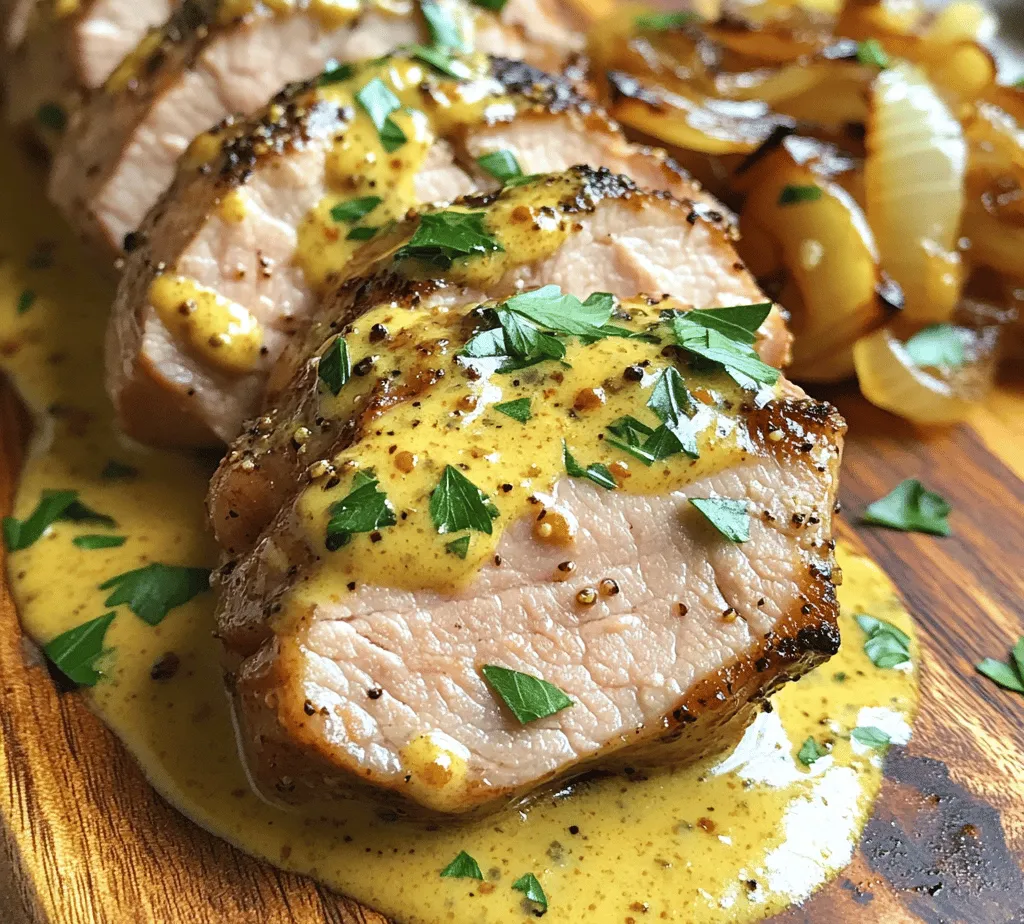
The Role of Onion and Garlic in Enhancing Flavors
Onion and garlic are fundamental ingredients in many savory dishes, and for good reason. When sautéed, onions develop a natural sweetness that forms the backbone of many sauces and meat dishes, providing depth and richness. Garlic, on the other hand, offers a pungent, aromatic quality that elevates the flavors of any dish. In the context of our Savory Pork Tenderloin with Creamy Mustard Sauce, the combination of onion and garlic not only enhances the overall flavor profile of the dish but also contributes to the sauce’s complexity.
When you start to sauté these aromatics, the kitchen fills with an enticing aroma that builds anticipation for the meal ahead. Properly sautéing these ingredients ensures that their flavors are fully released, making your sauce and pork tenderloin even more delicious.
Proper Sautéing Techniques for Maximum Aroma
To achieve the best flavor from your onions and garlic, start by heating a skillet over medium heat, adding a generous amount of olive oil or butter. It’s essential not to overcrowd the pan; otherwise, the onions will steam rather than sauté.
1. Chop the onion into small, even pieces to ensure uniform cooking. Add them to the skillet, stirring occasionally to prevent them from burning. You want them to turn translucent and lightly caramelized, which usually takes about 5-7 minutes.
2. Minced garlic should be introduced only after the onions have softened. Garlic cooks much faster than onions and can burn easily, leading to a bitter taste. Add it to the skillet for about 1-2 minutes, stirring constantly until fragrant.
This technique not only maximizes aroma but also sets the stage for the creamy mustard sauce that will develop later.
Creating the Creamy Mustard Sauce
Bringing the Sauce to Life
The creamy mustard sauce is the star of this dish, balancing richness and tanginess beautifully. To make this sauce, you’ll want to follow these step-by-step instructions:
1. After sautéing the onion and garlic, deglaze the pan by adding a splash of white wine or chicken broth. This will lift any flavorful bits stuck to the bottom of the skillet, incorporating them into your sauce.
2. Add your choice of mustard (Dijon or whole grain) to the pan. The mustard provides a sharp, tangy flavor that cuts through the creaminess.
3. Pour in the heavy cream and stir well to combine. Let this mixture simmer gently for about 5-10 minutes, allowing the flavors to meld and the sauce to thicken slightly.
4. Season with salt and pepper to taste. You can also add a pinch of fresh herbs like thyme or tarragon for additional flavor.
This creamy mustard sauce balances creaminess with tanginess, creating a delectable coating for the pork tenderloin.
Thickening Techniques
Achieving the desired consistency for your sauce is crucial. If the sauce is too thin, you can thicken it by allowing it to simmer longer, which reduces the liquid and intensifies the flavor. If you prefer a quicker method, consider the following techniques:
- Cornstarch Slurry: Mix equal parts cornstarch and cold water, then stir this mixture into your sauce. Bring it to a simmer until thickened.
- Butter Enrichment: Stir in a few pats of cold butter at the end of cooking. This will not only thicken the sauce slightly but also make it richer and silkier.
Remember, simmering and stirring are key. Allowing the sauce to bubble gently while stirring frequently prevents scorching and ensures an even consistency.
Cooking and Serving the Pork Tenderloin
Finishing the Cooking Process
Once your sauce is ready, it’s time to focus on the pork tenderloin. Properly monitoring the internal temperature is vital for achieving perfectly cooked pork.
1. Sear the pork in a hot skillet to develop a golden crust. This adds a pleasing texture and flavor.
2. Transfer the skillet to the oven preheated to 400°F (200°C) to finish cooking. Use a meat thermometer to check for doneness; the internal temperature should reach 145°F (63°C) for medium-rare.
3. Remove the pork from the oven once it reaches the desired temperature and let it rest for at least 5-10 minutes. This resting period allows the juices to redistribute, resulting in a more tender and juicy pork tenderloin.
Resting and Slicing
Resting the pork is crucial for ensuring tenderness. As the meat rests, the muscle fibers relax, allowing the juices to redistribute throughout the meat. To slice the pork tenderloin into medallions:
1. Use a sharp knife and cut against the grain. This will prevent the meat from becoming tough and chewy.
2. Aim for even slices about 1-inch thick. This not only ensures uniform cooking but also enhances presentation.
Presentation and Garnishing
Presentation can elevate your meal from everyday to extraordinary. For plating, consider the following suggestions:
- Arrange the pork medallions on a serving platter, slightly overlapping them for a beautiful effect.
- Drizzle the creamy mustard sauce generously over the top, letting it pool around the pork.
- Garnish with fresh parsley or other herbs for a pop of color and freshness.
Serve hot and enjoy the satisfaction of a visually appealing dish that also delights the palate.
Pairing Suggestions
Complementary Side Dishes
To enhance the meal, consider side dishes that complement the flavors of the pork tenderloin and mustard sauce:
- Roasted seasonal vegetables: Carrots, Brussels sprouts, and butternut squash roasted with olive oil and herbs make a vibrant addition to your plate.
- Creamy mashed potatoes or potato gratin: These rich sides pair beautifully with the creamy sauce.
- Grains: Quinoa or wild rice adds a nutty flavor and a wholesome touch to your meal.
Wine Pairings
The right wine can elevate your dining experience. Here are some recommendations for wines that pair well with pork tenderloin:
- Chardonnay: A full-bodied Chardonnay, especially one with oak aging, complements the creaminess of the sauce while balancing the tang of mustard.
- Pinot Noir: For a red option, Pinot Noir’s fruitiness and acidity work nicely with pork, enhancing the dish’s richness without overpowering it.
- Sauvignon Blanc: This white wine is known for its crisp acidity and herbaceous notes, making it a refreshing partner for the mustard sauce.
Conclusion
The Savory Pork Tenderloin with Creamy Mustard Sauce is more than just a recipe; it’s an invitation to savor the joy of cooking and sharing a delicious meal with loved ones. With its creamy, tangy sauce and perfectly cooked pork, this dish promises to impress at any dinner table. By following the steps outlined in this article, you can create a delectable meal that not only satisfies the palate but also nourishes the soul. Embrace the flavors and techniques discussed, and enjoy the process of crafting this delightful dish in your own kitchen. With the right pairing and presentation, your culinary creation will not only fill bellies but also create lasting memories around the dining table.


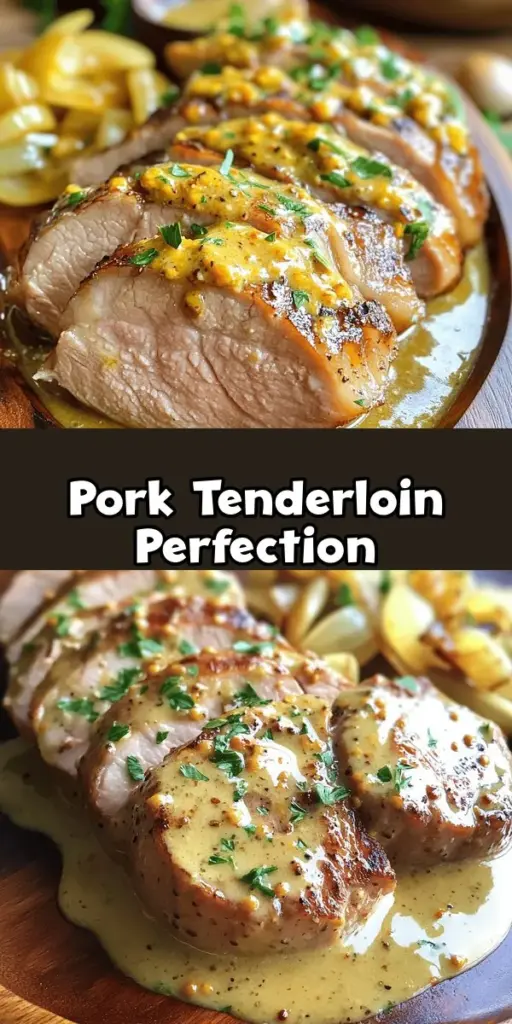

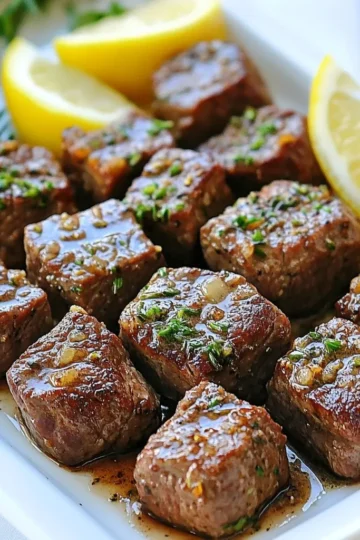
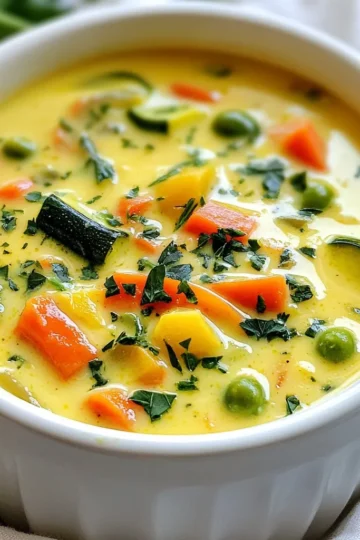
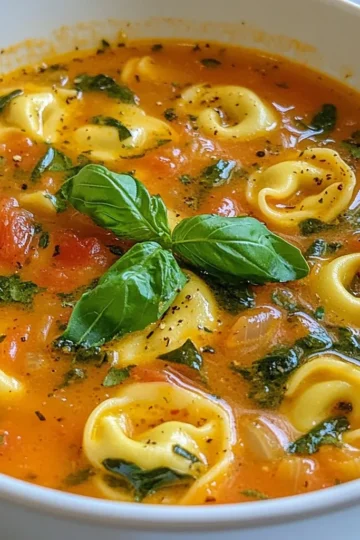
Leave a Reply